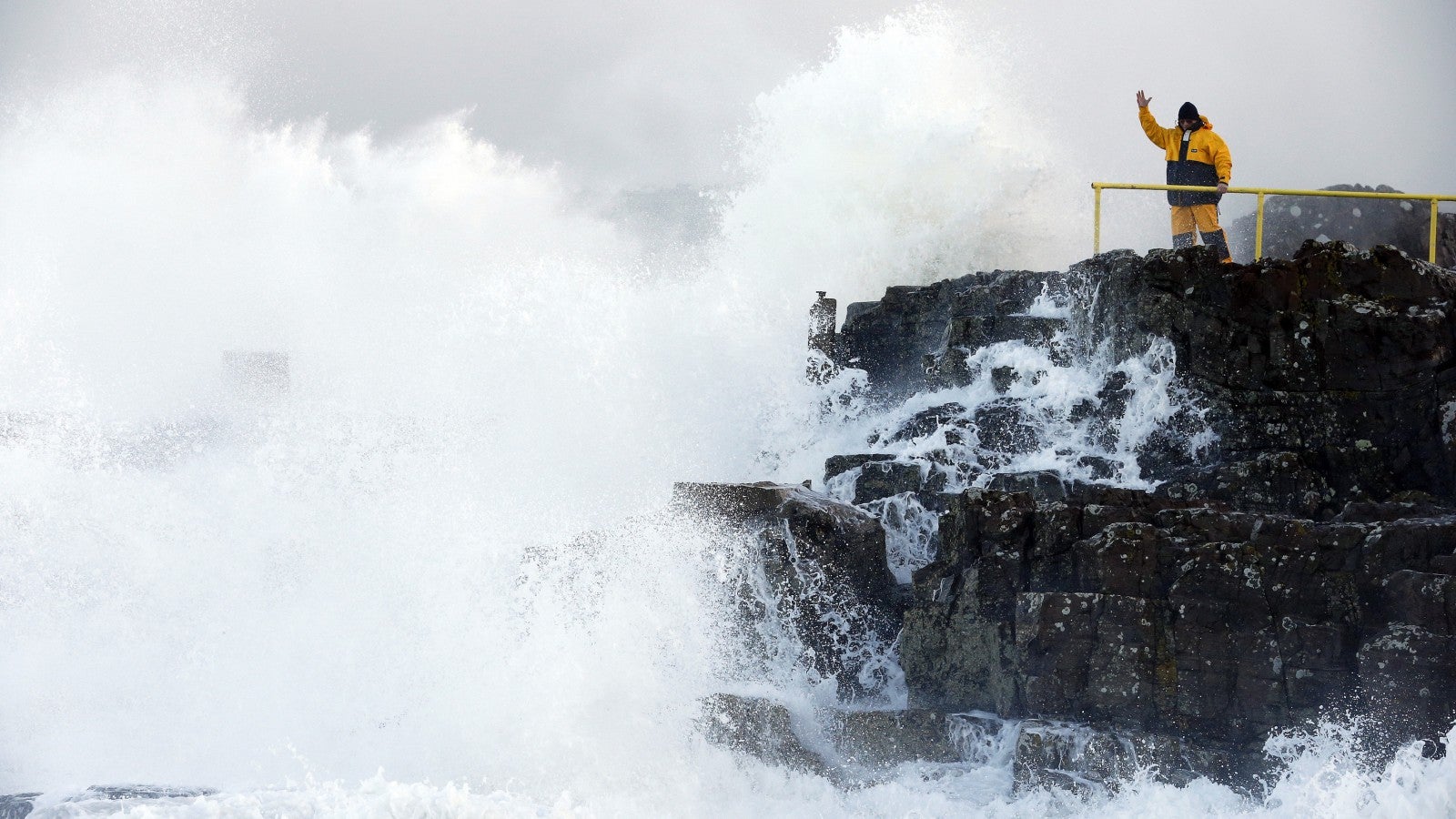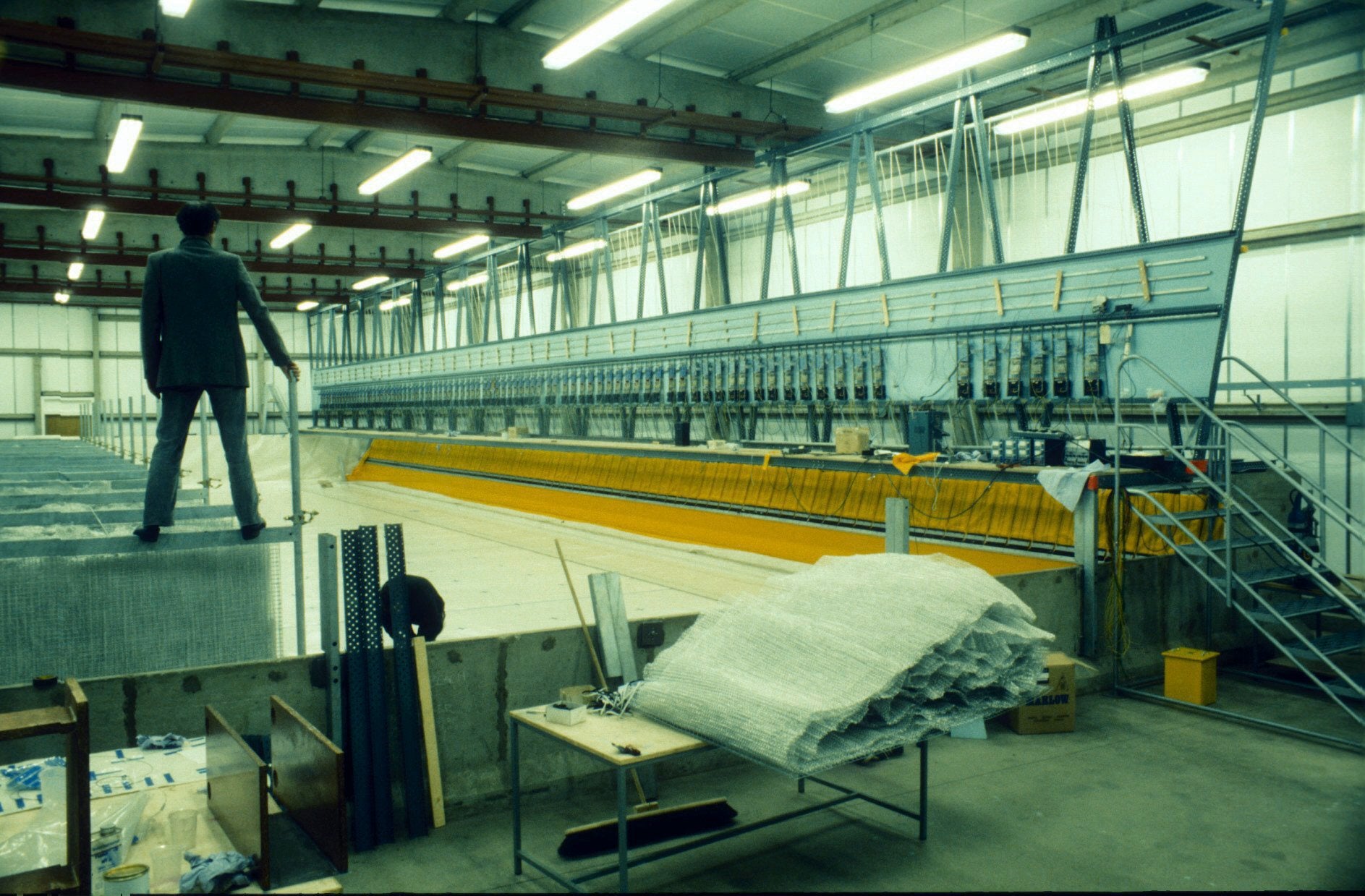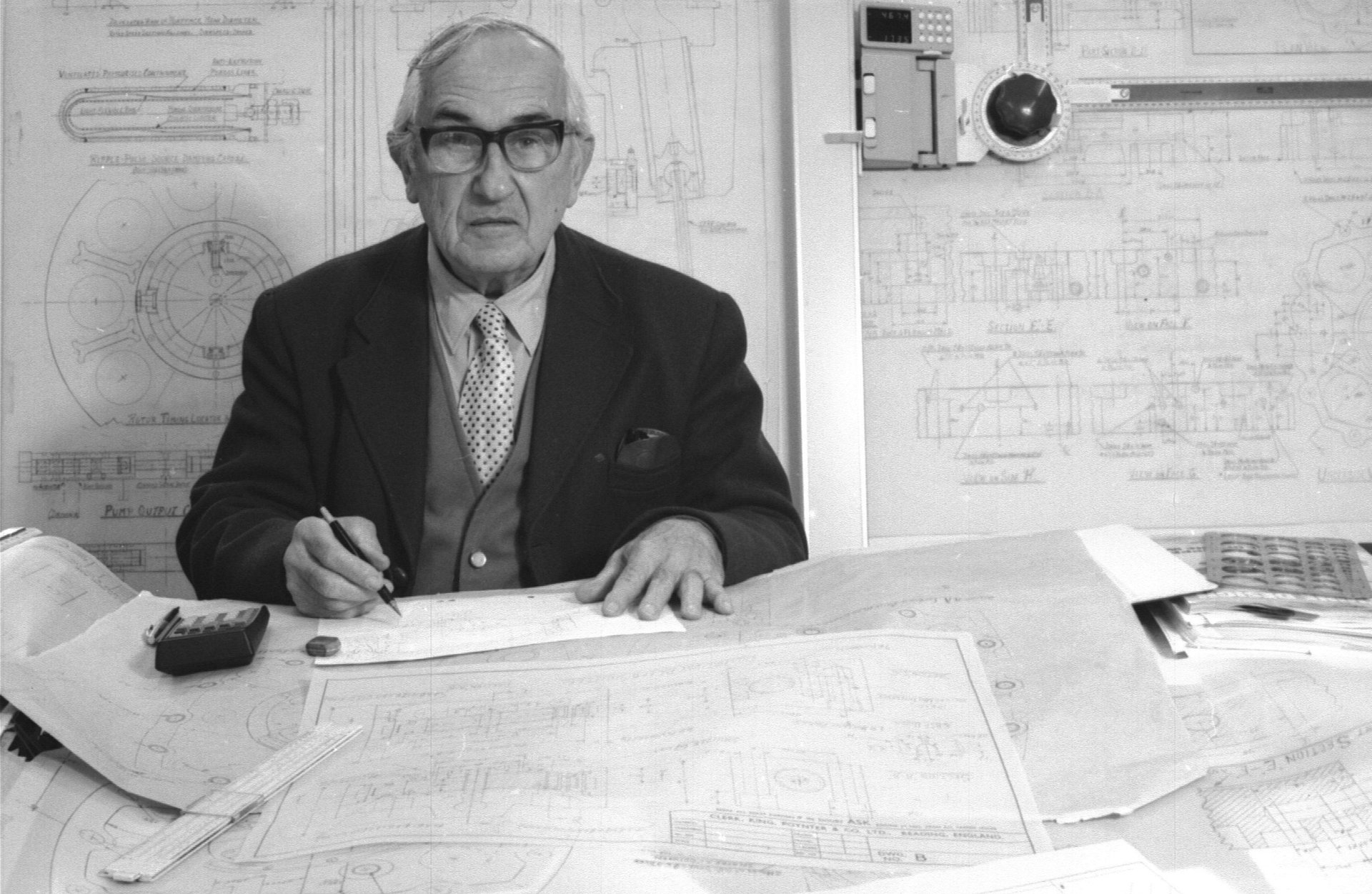The promise of ocean wave power has enticed, and eluded, engineers for 40 years
It’s 1974. A man stands on the Scottish coast and stares out to sea. His dark hair is ruffled by the wind, while his mind is fixed on a new, pressing problem: How can all the teeming, crashing power of the ocean be harnessed to produce electricity, in a world that has just discovered it can’t rely on cheap oil forever?


It’s 1974. A man stands on the Scottish coast and stares out to sea. His dark hair is ruffled by the wind, while his mind is fixed on a new, pressing problem: How can all the teeming, crashing power of the ocean be harnessed to produce electricity, in a world that has just discovered it can’t rely on cheap oil forever?
That man, and his colleagues, are still searching for the answer.
For four decades, the problem of how to create an economically viable business producing power from waves has fascinated a specialized group of engineers, many of whom are concentrated around the sea-beaten coast of Scotland. Inventors have created all sorts of strange and wonderful devices to coax energy out of the water; investors have poured millions of pounds into the effort.
The problem is arguably one of the most perplexing in energy production. And maybe, just maybe, the answer is getting closer.
Seeking lovely, smooth lines

Stephen Salter, the “grandfather” of wave power, built what was probably the world’s first Wave Energy Converter (WEC)—a device to go in the sea, and use the power of the waves eventually to drive a generator—back in the 1970s.
His device, which he called the Duck, spawned dozens of “things which bob around in the ocean and have cute names,” explains Jamie Taylor, senior project manager at Artemis Intelligent Power Ltd, a company that spun out of Edinburgh University research and was bought by Mitsubishi in 2010 .
At Artemis, Taylor is exploring one element of the power conversion process: how to use hydraulics to transfer the power from WEC to generator, as smoothly as possible. The technology, which also can be used in the offshore wind industry, won the 2015 MacRobert Award, a top engineering prize awarded by the Royal Academy of Engineering.
I met Taylor at his lab in February. It’s a low building, on an industrial estate on the outskirts of Edinburgh. Here, engineers use computers to model technologies, and then go to the workshop in the back to try them out in hulking, metallic, physical form.
Taylor often reaches for musical metaphors while describing the technology they are trying to build. (He plays fiddle in his spare time.) The WEC, he says, is like a powerful “woofer” speaker; what Artemis does is fine-tuning, of the treble notes.
Richard Yemm, head of Quoceant, a firm specializing in marine energy services and consultation, has dropped by on his way to a conference about ocean renewables. Yemm founded a wave power company in the 1990s, and spent 17 years trying to make the technology viable as a business. No one has yet done so, and he had to shutter his company, Pelamis, in 2014.
Waves range from tiny ripples to the crashing walls-of-water. Any machine that gets put in the sea receives a “horrible, nasty, lumpy, spiky input,” says Yemm, “and yet it has to produce electricity that the grid will accept…a lovely, smooth line.” That’s where the hydraulic technology’s ability to “iron out” the imperfections is so useful.
A control perspective
Wave power isn’t the only type of energy derived from the sea. There’s also tidal power, where more predictable flows and different water heights can be used to drive turbines. It, too, is a young industry, but it is farther along in its development than wave power is.
Whereas tides can be measured and planned for, flowing in and out at predictable times and heights, the complexity of waves makes them much less easy to deal with.
“I always think of something like a piano, or a big organ,” Taylor says. “There’s all these different notes, and each note corresponds to a different wavelength. Because waves start out being very short, little, almost like waves on the top of a teacup. And then they gradually—as the wind keeps blowing, and they travel distance—they become longer and longer. And as they get longer, they travel faster.”

And sometimes it’s a cacophony, with sounds coming not just from different sections of the orchestra, but from different symphony halls altogether. Storms off South America, winds in Icelandic waters, breezes from round the corner—waves “are coming with all these different histories…and they’re coming from different angles,” Taylor says.
“From a control perspective or a system design perspective, you’re thinking, how can we best capture energy from all these different bits?”
History will judge
Things were looking good for wave power back in 2014. That year, I visited the European Marine Energy Centre, one of the world’s foremost test centers (paywall), in Orkney, on the northeastern coast of Scotland. Pelamis, the company founded by Yemm, had its distinctive red-and-yellow “sea-snake” in the water. Aquamarine, another Scottish firm, was testing its own device, called the Oyster. I went onboard a big, floating, Batman-villain-lair of a device called the Penguin, which got rolled around by the waves, transferring the energy from their oscillations.
Pelamis, which had a staff of 70 and spent £90 million over its 17 years in business, folded in the fall of 2014. A year later, Aquamarine met the same fate.
“People ran out of money, or people ran out of patience with the technologies, before they got over the line,” says Neil Kermode, who runs the Orkney test center. There was “so much they had done that was good… So, it does seem such a terrible shame, that we’ve not been able to keep progressing as we were. That really is sad. And history will judge whether the right decisions were taken.”
Nevertheless, Kermode remains optimistic. Scotland barely had an oil and gas sector in the 1970s, and has built up a massive network of rigs and drilling operations since then. Offshore is where much of the country’s expertise lies, and he thinks it will remain an innovator in energy.
“Scotland is really, very strongly still behind marine renewables,” and reiterated its leadership role after the global climate talks in Paris in 2015, Kermode said. “That was extremely encouraging.”
Meanwhile, neither Yemm nor Taylor are planning to stop trying to find ways to harness power from waves—far from it. Artemis has the backing of its Japanese owners, and while the wave sector develops, the firm has other markets for its technology, like wind power. Artemis developed power take-off technology for the world’s largest floating wind turbine, for example.
All the while, new players are coming into the wave sector, feeding off 40 years of testing and hard-earned institutional knowledge, bringing fresh perspectives and funding with them. Maybe one of them will find the breakthrough the sector needs.
Or maybe a more experienced hand will get there first.